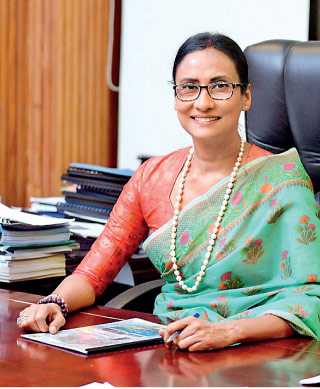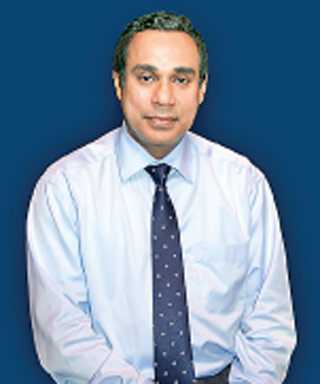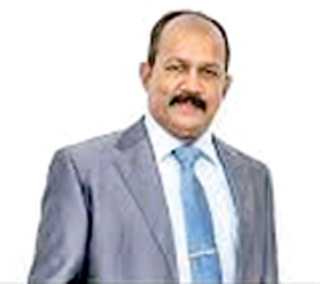Monday Apr 07, 2025
Monday Apr 07, 2025
Thursday, 8 April 2021 02:45 - - {{hitsCtrl.values.hits}}
By Charumini de Silva
 |
| Sri Lanka Tourism Chairperson Kimarli Fernando |
 |
| THASL President Sanath Ukwatte |
 |
| SLAITO President Thilak Weerasinghe
|
Impacted by the double whammy of the Easter Sunday attack and the COVID-19 pandemic, the tourism industry appears to have received a fresh jolt following this week’s Cabinet approval to formulate a new Act for the sector.
Based on a proposal in the Budget 2021, Tourism Minister Prasanna Ranatunga on Monday got Cabinet approval to amalgamate three institutions — the Sri Lanka Tourism Development Authority (SLTDA), the Sri Lanka Tourism Promotion Bureau (SLTPB) and the Sri Lanka Convention Bureau (SLCB) – to repeal the Tourism Act No. 38 of 2005 and to draft a new bill to ensure sustainable development of the tourism industry.
The new legislation will establish a Sri Lanka Tourism Authority by consolidating the three existing institutions.
However, yesterday, two leading industry bodies – The Hotels Association of Sri Lanka (THASL) and Sri Lanka Association of Inbound Tour Operators (SLAITO) – in a joint statement said that they were not in favour of changing the current Tourism Act of 2005, whilst Sri Lanka Tourism Chief Kimarli Fernando countered stating that the two associations did not reflect the views of the three million people dependent on the industry.
In a joint statement, THASL and SLAITO said they are of the view that the focus should be to resurrect the ailing tourism industry.
“The changing of the current Act, which has served its purpose in challenging times, is not the answer for the future development of the tourism industry,” they said, adding that the tourism industry is private sector-driven, and that the SLTDA plays the role of regulator cum facilitator.
“The current Act has been drafted in a manner that the private sector and public sector can cooperate and work together in partnership for the betterment of the tourism industry,” the statement added.
It further pointed out that the four institutions that have been setup by the current Act – SLTDA, SLTPB, SLCB and Sri Lanka Institution of Hotel Management (SLITHM) – cater to the different sectors, segments and different needs of the tourism industry.
“The boards of these institutions are well represented by the private sector professionals of the tourism industry and the Government officials representing the relevant ministries such as tourism and finance. The two associations firmly believe that if the current Act is implemented efficiently, the tourism industry of Sri Lanka can move forward to achieve the objectives and goals set by the Government of Sri Lanka. If at all, if there is an issue, it is not due to the Act itself, but the reluctance to implement it the way it should have been.”
The only area where a change can be considered according to THASL and SLAITO is to look at the possibility of merging the back office functions such as finance, HR, IT, legal departments which will result in a cost saving for the institution.
“We are of the firm view that the tourism industry cannot be developed by merely changing the current Tourism Act, and a change should not be done unless there is a real benefit to the stakeholders of the tourism industry in the long term.”
The two associations together have a membership of over 500 and are largely responsible for sustaining the tourism industry of Sri Lanka.
“THASL and SLAITO members are the main investors in the tourism industry and they are responsible in generating the majority of tourist arrivals to the country. In addition, they also pay the highest amount of taxes to the Government of Sri Lanka,” the statement added.
Sri Lanka Tourism Chief Fernando told the Daily FT that the proposal to merge tourism institutions was in the 2021 Budget and that the Cabinet paper was approved thereafter.
“It is in line with President Gotabaya Rajapaksa’s manifesto ‘Vistas of Prosperity and Splendour’ to streamline and re-engineer processes to transform public service efficiency. The merged institution will be in line with the need to build a people-centric economy and in line with global best practices such as Tourism Singapore and Tourism Australia,” she pointed out.
Fernando stressed that the current tourism structure is counterproductive, with wastage of resources in terms of financial, human capital and others.
“Having chaired all four institutions in the past 14 months, I have witnessed the wastage and lack of coordination amongst the tourism institutions and how inefficient this structure is. Previous Governments too have attempted to merge the institutions and due to having five chairmen over the past five years, projects like these were stalled,” she said.
She emphasised that the current structure could not be considered a success, noting that around 2,500 hotels were registered in Sri Lanka and there are over 20,000 unregistered that are not supported at all.
“There is no safety net for SMEs. The private sector with majority board seats failed to have an integrated global promotion since 2007. The only time a global promotion was successfully executed was when the board seats were reduced,” she pointed out.
Fernando charged that the current structure has failed: to develop domestic tourism, to use digital platforms for promotions, and position Sri Lanka to reach the consumer. All this, despite focusing on going on travel shows, spending nearly Rs. 1 billion in 2019, which too was not shared with all stakeholders.
“The tourism industry is not one or two associations with 200 to 300 members each, although they play a critical role — the tourism industry impacts almost three million of our citizens, who have not been represented nor had their voice heard,” she said.
The Sri Lanka Tourism Chief said the independent source of funding would be maintained even in the impending Act, with private sector representation at industry consultative committees the voice of the entire tourism industry.
“Currently, we only have a working document which needs to be studied internally first, and thereafter we will share with the entire industry and seek their input and feedback. In November 2020, the Tourism Ministry Secretary wrote to all stakeholders requesting their feedback, but only a few associations even responded,” she added.
She also said that 488 staff are in favour of the decision to amalgamate the three institutions.
Discover Kapruka, the leading online shopping platform in Sri Lanka, where you can conveniently send Gifts and Flowers to your loved ones for any event including Valentine ’s Day. Explore a wide range of popular Shopping Categories on Kapruka, including Toys, Groceries, Electronics, Birthday Cakes, Fruits, Chocolates, Flower Bouquets, Clothing, Watches, Lingerie, Gift Sets and Jewellery. Also if you’re interested in selling with Kapruka, Partner Central by Kapruka is the best solution to start with. Moreover, through Kapruka Global Shop, you can also enjoy the convenience of purchasing products from renowned platforms like Amazon and eBay and have them delivered to Sri Lanka.
Discover Kapruka, the leading online shopping platform in Sri Lanka, where you can conveniently send Gifts and Flowers to your loved ones for any event including Valentine ’s Day. Explore a wide range of popular Shopping Categories on Kapruka, including Toys, Groceries, Electronics, Birthday Cakes, Fruits, Chocolates, Flower Bouquets, Clothing, Watches, Lingerie, Gift Sets and Jewellery. Also if you’re interested in selling with Kapruka, Partner Central by Kapruka is the best solution to start with. Moreover, through Kapruka Global Shop, you can also enjoy the convenience of purchasing products from renowned platforms like Amazon and eBay and have them delivered to Sri Lanka.